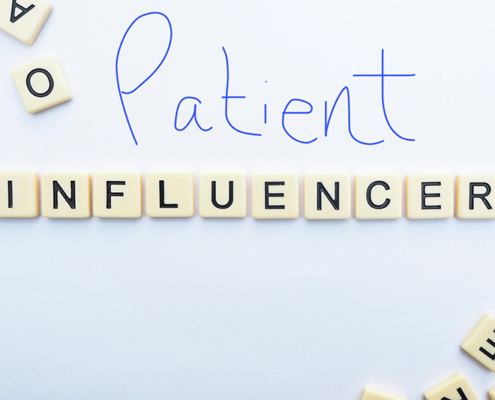We can do it too
We can do it too
Yes, Virginia, pharma can do patient influencer marketing. Some brands are already doing it.
By Joshua Slatko • [email protected]
Social media influencers became de rigueur in consumer marketing almost as quickly as they became a public phenomenon in the first place. All sorts of well-known brands have jumped on the bandwagon: Sprint, Lagavulin, Old Navy, Fiji Water, pretty much any clothing or beauty brand, on and on. If a consumer brand isn’t partnering with someone on Twitter or Instagram, they might seem to the average civilian, or at least the average teen, a bit out of date.
Of course, we can’t do that sort of thing in staid, slow-to-adapt pharma. Can we?
Turns out that we can. And some of us already have.
“The adoption of influencer marketing efforts varies greatly within pharma, and we have seen an increased level of interest in our offerings, particularly given the variety of ways with which we can partner with pharma,” says Kristen Hartman, senior VP of strategic solutions for Health Union, an agency focused on patient influencers. “This is, in large part, due to an evolution in technology and human behaviors causing socially engaged health audiences to now be among the most difficult to reach through traditional media and marketing channels.”
Health Union partners with what Hartman calls “patient leaders” in a variety of ways, as trusted sources of info for their communities. “Building relationships with people who want to make a difference, not influence, is the foundation of how appropriate and impactful patient influencer marketing can be done.”
How prominent have these patient leaders become in the DTC mix? Well, some brands and agencies clearly aren’t yet comfortable with the idea. But some clearly are; in fact, Hartman asserts that for some brands, patient leaders are the single largest digital tactic in use for reaching consumers. “Social media and patient partnerships are now the cornerstone of a sophisticated and comprehensive marketing plan,” she asserts. “From content co-creation to message amplification, patient leaders play a significant role in DTC programs and campaigns.”
When seeking out patient leaders to partner with a brand, Health Union doesn’t necessarily begin with who has the biggest reach. Instead, the focus is on authenticity in parallel with the brand’s communication needs.
“Our model is built on bringing people together in the shared experience of living with a chronic, or complex, condition,” Hartman says. “In doing so, we have the ability to match patient leaders and influencer marketing programs, accordingly. To be suited for a specific brand relationship, the patient leaders and their respective audiences need to authentically align with the patient population that the brand aims to reach. Credibility within these audiences and the ability to speak truthfully about their experience is critical.”
Of course, reach does matter, especially cross-channel reach. “We recognize that the other critical factor to influencer marketing is the ability to connect with people in meaningful ways not only on one platform or channel but across all social channels where people are engaging.” The elements of this success, Hartman explains, include the depth of which they focus on a specific condition, how scalable their content is, and how appropriately targeted promotion can extend that scale. The patient leader must also ensure that the brand is aligned to their core values, and that the partnership will be one of transparency and collaboration.
Building and succeeding with such relationships, though, will always be based on authenticity. In a 2020 survey, Hartman’s agency asked respondents to rank the top considerations for branded influencer marketing. The findings showed that patients ranked authenticity and transparency as one and two, respectively, over traditionally important considerations like level of engagement and level of influence. This, Hartman says, proves that influencer marketing with patient leaders is philosophically different from other, more common forms of influencer marketing – and centered on trust.
“The patient or caregiver must be living with or impacted by the condition,” Hartman told Med Ad News. “If the campaign is specific to a treatment, it is important for the patient leader to have experience with that treatment. There might also be opportunities for patient leaders to promote other resources that the brand offers that could be beneficial to patients, like a support or prescription drug program. Regardless, the content must be clearly labeled as an ad and follow FTC and FDA guidelines related to the type of advertising.”
Hartman adds, “On the flip side, it’s important for brands to engage in programs that allow the patients’ voice to come through and be accurate from a legal and regulatory perspective, without being diluted. Like all promotional efforts in this space, this means allowing patients to speak in their own voice within the medical, legal and regulatory parameters. At Health Union, we partner with patient leaders to ensure they understand the regulated environment in which they are communicating as we find it helps provide the background necessary to strike the appropriate balance and tone in content.”
Finding and engaging with patient leaders, though, is only the first step in the process. Next is figuring out what the patient leader’s priorities are and how those might fit into the brand’s story.
“At Health Union, we engage and build relationships with patient leaders in a variety of different capacities – including as contributors and moderators – based on how they want to make connections and make an impact,” Hartman says. “A key element of our approach is that these patient leaders see themselves not as influencers but as making a difference, which all occurs outside of pharma relationships. From there, we can foster and develop relationships in a variety of ways that have a mutually beneficial impact. Starting with a relationship that shows we understand the patient leader, what matters to them and how they want to engage, is an important and differentiating nuance.”
Since each relationship is dependent on what matters to each patient leader, there is no one cookie-cutter model for such relationships; they are each as unique as the individual at the other end of the line. “[These relationships] could entail partnering with them on market research projects, engaging them in an advisory role, or simply just listening to their ideas as it relates to the campaigns in which they are participating,” Hartman explained to Med Ad News. “It’s critical that the patient leader has a seat at the table and their voice is heard. When the patient leaders we work with at Health Union talk about what they want out of partnerships with pharma brands, we consistently hear collaboration, the desire to feel like their perspectives are actually being considered and not feeling like they are a tool to grow their audiences.”
As with any good relationship, mutual trust and respect between brand team and patient leader is paramount, especially if content is to be created together. “We often hear from patient leaders that the ideal partnership … includes the patient leader in the process from concept to completion,” Hartman says. “They want to build a relationship with the brand that goes beyond a transaction. As engaged individuals, who are very cognizant and involved in their respective condition space, and who are dedicated to informing and educating their audiences, patient leaders want to meet the people involved. Importantly, in many cases, they want to continue conversations beyond the projects to further make an impact in the industry.” This sort of relationship, she explains, results in thoughtful, authentic, engaging content that resonates with the patient community and helps the brand reach new patients. In turn, healthcare company partnerships can provide patient leaders with a larger platform that can help them to grow their presence, if that is what they desire.
What might collaborative patient influencer content look like? Hartman offers her agency’s “Patient Insider” features as an example. “This feature showcases the emotional and detailed story of a patient ‘insider’ (i.e., patient leader) who is eager to share their health journey in a way that is compelling, authentic, emotional, and engaging,” she says. “Each Patient Insider feature lives within the relevant condition community website so their story naturally reaches others who are impacted by the condition and can relate to all aspects of their experience, including diagnosis, treatment and various emotional, mental health and quality-of-life concerns. These features include real imagery of the individual patient leader, a video and recommended readings that are personally selected. On the pharma side, it provides brands with a unique opportunity to exclusively advertise alongside relevant, powerful content and engagement features in moments that matter most to patients.”
Sidebar: Hartman explores misconceptions about influencer marketing with patient leaders.
Whatever content or opportunities might arise from a brand’s relationship with a patient influencer, it is important to manage expectations from the beginning. After all, this isn’t a traditional ad campaign in which every piece of content is entirely within the brand’s control. Components that go into traditional campaigns as a matter of course are out of place here. And measuring impact looks very different.
“It’s important for brands to keep in mind that the greatest value will be derived through authenticity, and scripting patients can ultimately lead to inauthentic content that performs poorly,” Hartman explains. “Brands also will benefit from approaching the relationship with defined goals and guardrails, but not an agenda for exactly how they want it to play out. We have found that not having an agenda – and letting the campaign flow through collaboration and patient leaders’ ability to speak authentically and connect with their audiences – yields better results. Another thing for brand managers to keep in mind is that measurement of an influencer marketing campaign, driven by social content and engagement, is very different from measuring the impact of a traditional media advertising campaign. And a spreadsheet does not tell the complete story.”
 |
Josh Slatko is contributing editor of Med Ad News and PharmaLive.com. |












